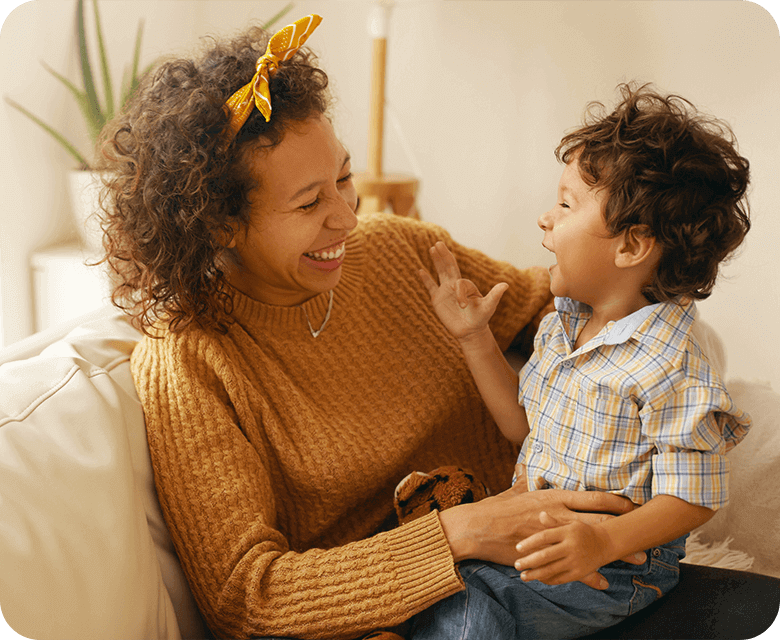Panadol Regular
Panadol Rapid
Panadol Extra
Panadol Osteo
Panadol Childrens - Liquid
Children’s Panadol Colourfree Liquid (1 Month – 1 Year)
Children’s Panadol Elixir (5 Years – 12 Years)
Panadol Childrens – Suspension
Children’s Panadol Colourfree Suspension (1 Year- 5 Years)
Children’s Panadol Colourfree Suspension (5 Years – 12 Years)
Panadol Childrens – Suppositories
Children’s Panadol Suppositories (6 Months – 5 Years)
Children’s Panadol Suppositories (5 Years – 12 Years)
Panadol Childrens – Chewable



An elevated temperature is common when your child is ill. Seek medical advice if your child is under 3 months and has a fever that persists for more than 24 hours. This is to ensure that fever that may be due to a serious infection is quickly diagnosed.
Before giving a paracetamol-containing medicine to children under 6 months, seek medical advice. Do not give a paracetamol-containing medicine for more than 48 hours at a time, except on medical advice.
You'll want to learn more about signs of fever and how to determine if your child has a fever.
3 signs of fever in children
1. Their skin feels hot Does their forehead, tummy or back feel overly warm?
2. Their cheeks are pink Do they look unusually flushed or red-faced?
3. They’re sweaty Does their skin feel sweaty for no reason, or clammy?

How can I tell if my child has a fever?
The quickest way to determine whether your child has a fever is to take their temperature. You may have a thermal (forehead) or digital ear thermometer, which are suitable for older children and adults. If they’re under five years old, however, it’s best to take it in their armpit.
Your child’s normal temperature naturally fluctuates slightly but if it goes higher than 38°C then, yes, your little one has a fever.
What are other signs of fever in toddlers and children?
Don’t have a thermometer handy? No worries, there are several other tell-tale signs of fever in children. When your kid’s got a fever, you’re likely to see changes in their mood and behaviour that can signal to you that something isn’t quite right.
While every child is unique, and you know your child best, here are some other common symptoms when a child has a fever.
- Being irritable They may be moodier than usual.
- Shivering Do they have the chills?
- Sweating Their skin may be sweaty or clammy.
- Headache They may complain of headache.
- Feeling tired Are they less energetic than usual?
- No appetite Are you struggling to get them to eat?
- Dehydration Check to see if their mouth is dry.
As a parent, you're naturally worried, and it's never nice to witness your child in discomfort. Keep a close eye on them and do your best to make them comfortable. Don't hesitate to consult a doctor if you're concerned or feel something isn't right.
What is a normal temperature for children?
A normal temperature for children is about 36.4°C to 37.2 °C. What is considered ‘normal’ is not a specific number but a range. Your child’s body temperature will fluctuate slightly in response to environmental factors like the room temperature or the weather. Your child may feel also warmer for the simple reason that they have a woolly jumper on.

How can I help relieve my child’s discomfort?
There are several home remedies that can help bring your child’s temperature back down so they’re more comfortable. Always refer to your doctor’s advice. You may also be able to use over-the-counter pain-relief medicines containing paracetamol, to help bring down your child’s fever. Seek medical advice before giving a paracetamol-containing medicine to children under 6 months.
How can I reduce my child’s fever?
To help keep your child comfortable when they have a fever, there are a few things you can try:
- A cool compress Dampen a washcloth with cool (not too cold) water and place it on their forehead.
- Light clothing Make sure your child’s not overdressed, for example choose cotton instead of flannel pyjamas. If they start to shiver, you can offer them a light blanket to make them more comfortable.
- Lots of fluids It’s important to stop your child from becoming dehydrated.
- Over-the-counter pain relief Paracetamol can be used to bring down fever in children from the age of one month. Seek medical advice if your child is under 3 months and has a fever that persists for more than 24 hours. This is to ensure that fever that may be due to a serious infection is quickly diagnosed. Before giving a paracetamol-containing medicine to children under 6 months, seek medical advice. Always follow the dosage guidelines on the label for your child’s age and weight. Also take care not to give them more than one medicine containing paracetamol.
Never give aspirin to a child under 16 unless instructed to do so by a doctor.

Seek medical advice if your child is under 3 months and has a fever that persists for more than 24 hours. This is to ensure that fever that may be due to a serious infection is quickly diagnosed.
Before giving a paracetamol-containing medicine to children under 6 months, seek medical advice. Do not give paracetamol-containing medicine for more than 48 hours at a time, except on medical advice.
You're the expert when it comes to your kid, so you should always trust your instincts if they're telling you that something is wrong.






